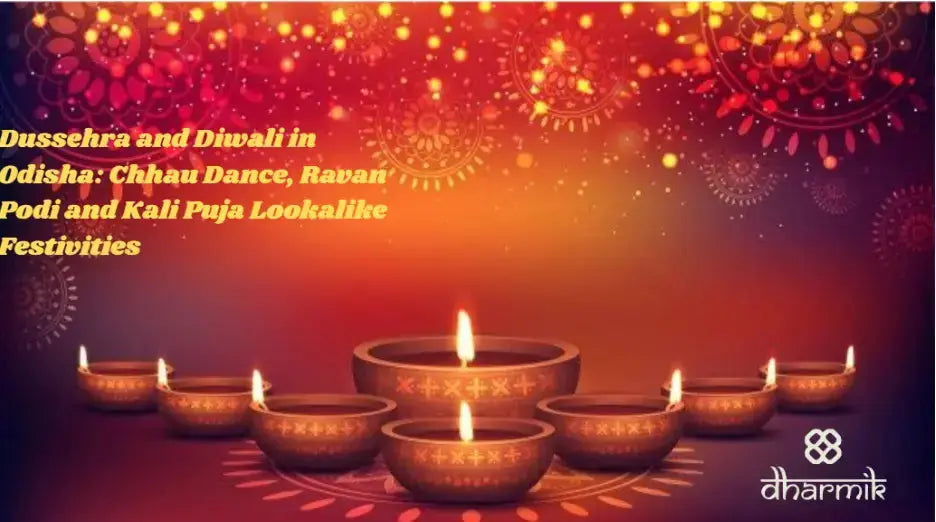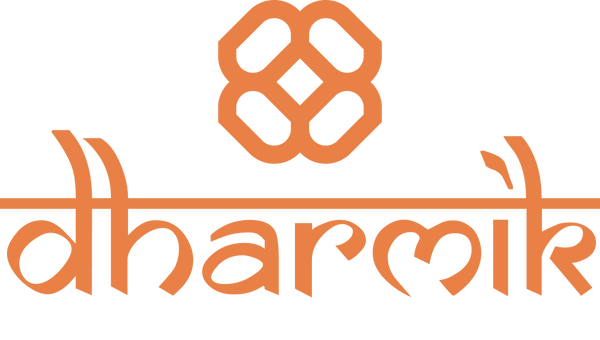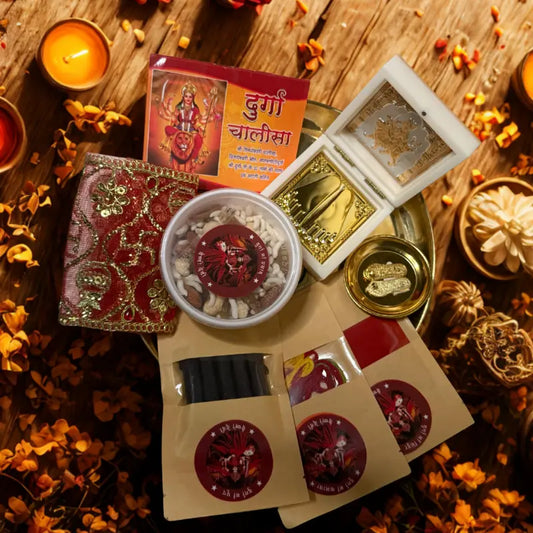
Dussehra and Diwali in Odisha: Chhau Dance, Ravan Podi and Kali Puja Lookalike Festivities
Share
When autumn arrives in Odisha, the air fills with devotion, lights, and cultural celebrations that make Diwali here unique. Unlike the mainstream northern celebrations, Odisha’s Diwali rituals bring together Ravan Podi, Chhau Dance, and Kali Puja-inspired traditions. Families decorate homes with diyas, temples glow with offerings, and communities unite for dance dramas and symbolic worship. Alongside these customs, sacred items such as a Lakshmi Ganesha Pure Silver Coin from Dharmik ensure that prosperity and devotion remain central to the season.
- Odisha’s Festive Blend: A mix of Diwali, Dussehra, and Kali Puja lookalike rituals.
- Chhau Dance: Traditional martial art performance with mythological storytelling.
- Ravan Podi: The dramatic burning of Ravana effigies symbolizing victory of good over evil.
- Sacred Offerings: Devotional products from Dharmik enrich worship during these festivals.
Chhau Dance – The Soul of Odisha’s Festivities

The Chhau Dance is one of the most fascinating parts of celebrating Diwali in Odisha. This martial art-based ritual blends mythology, devotion, and theatrical performance. During Diwali nights, communities gather to watch dancers in elaborate masks reenact episodes from the Ramayana and Mahabharata. The dance is not merely entertainment but a spiritual ritual, reminding devotees of the eternal triumph of dharma over adharma.
- Performance Rituals: Dancers wear masks, costumes, and armor symbolizing gods and demons.
- Mythological Themes: Episodes of Rama, Durga, and Kali inspire the movements.
- Community Spirit: Entire villages participate, merging devotion with culture.
- Home Devotion: Many families complement the experience by keeping a Ram Amrit Golden Coin from Dharmik in their altar during Diwali.
The Chhau Dance rituals in Odisha thus transform Diwali into a spiritual theatre that unites devotion, storytelling, and art.

Ravan Podi – The Symbol of Triumph
In Odisha, Ravan Podi rituals take place during Dussehra and extend into Diwali celebrations, symbolizing Rama’s victory. Massive effigies of Ravana, often along with Kumbhakarna and Meghanada, are burned in fields and community grounds. These rituals in Odisha blend with Diwali’s spirit of light over darkness, creating a powerful festive identity.
- Effigy Rituals: Built days before Diwali, burnt with fireworks and chants of “Jai Shri Ram.”
- Symbolic Victory: Fire represents the destruction of ego, greed, and evil.
- Family Gatherings: People watch together, followed by fireworks and sweets.
- Spiritual Practice: Many devotees keep a Ram Darbar from Dharmik at home, honoring Rama’s victory in sacred rituals.
Through Ravan Podi in Odisha, the spirit of Diwali rituals becomes more than celebration—it becomes a reminder of values.

Kali Puja Lookalike Festivities
While most of India celebrates Lakshmi Puja during Diwali, Odisha adds its unique touch with Kali Puja rituals. The goddess of power, Shakti, is worshiped in her fierce form through all-night vigils, offerings, and elaborate decorations. In towns like Cuttack and Bhubaneswar, pandals glow with artistic idols of Kali resembling the grandeur of Durga Puja.
- Kali Puja Rituals: Offerings of flowers, sweets, and sacrifices symbolize devotion.
- Diwali Twist: Diyas and firecrackers merge with the intensity of Kali worship.
- Community Bonding: Large pandals, cultural plays, and bhajans strengthen unity.
- Home Devotion: Families light incense with Divine Incense Cups from Dharmik to invite purity and blessings.
This fusion of Diwali and Kali Puja rituals in Odisha creates a devotional atmosphere unlike any other region.
Rituals of Light and Fire
The spirit of Diwali in Odisha thrives in its fire rituals, diyas, and havans. Villages and cities come alive with lamps along temples, ponds, and homes. Sacred fire offerings symbolize purity and continuity of tradition.
- Lamp Lighting Rituals: Diyas placed on tulsi plants, temple courtyards, and doorways.
- Havan Practices: Fire rituals performed in households and temples.
- Symbol of Purity: Light drives away ignorance, fire burns negativity.
- Sacred Essentials: Families often use incense cups from Dharmik during puja to preserve the sanctity of rituals.
In Odisha, Diwali rituals of light and fire merge with devotion, strengthening the spiritual bond of families.

Food, Offerings, and Prasad
Feasts are a vital part of Diwali in Odisha. From sweets like rasagolla and chhena poda to temple bhogs of khichdi and fruits, food reflects devotion and community spirit. Families exchange prasad after performing rituals, ensuring blessings flow within the community.
- Traditional Food: Odisha’s famous sweets enrich festive dining.
- Temple Rituals: Bhog is offered before distribution.
- Prasad at Home: Many families rely on Ayodhya Prasad Box from Dharmik to recreate temple offerings.
- Gifting Tradition: Sacred coins like the Ram Amrit Silver Coin from Dharmik are gifted during Diwali as symbols of blessings.
These rituals of food and prasad ensure that Diwali in Odisha is as much about sharing as it is about devotion.
Community and Devotional Spirit
Beyond rituals, Diwali in Odisha thrives in community bonding. People gather for prayers, cultural plays, and exchange of sacred gifts. Temples host bhajans and special aartis, while homes glow with diyas and sacred symbols.
- Community Gatherings: Bhajans, Chhau Dance, and pandal visits.
- Sacred Symbols: Families bring home Divine Ram Darbar from Dharmik as a centerpiece for devotion.
- Blessed Gifting: Sets like the Darbar Coin Gift Set from Dharmik become meaningful festive presents.
- This spirit of unity ensures that Diwali rituals in Odisha remain memorable and deeply spiritual.
Why Choose Dharmik for Your Order
During festivals like Dussehra and Diwali in Odisha, sourcing authentic puja essentials can be a challenge. Dharmik bridges this gap by offering sacred products with purity and authenticity.
- Temple-blessed Products: Authentic prasad and puja items.
- Wide Range: From silver coins to prasad boxes.
- Trusted by Devotees: Quality and purity guaranteed.
- Home Delivery: Bringing sacredness to your doorstep.
FAQs on Dussehra & Diwali in Odisha
Q1: What makes Diwali in Odisha unique?
The blend of Chhau Dance, Ravan Podi rituals, and Kali Puja-inspired worship makes it stand out.
Q2: How is Chhau Dance linked to Diwali?
Chhau Dance depicts mythological stories during the festive nights of Diwali in Odisha.
Q3: Are there special rituals during Diwali in Odisha?
Yes, rituals include diyas on Tulsi plants, havan practices, Ravan Podi, and Kali Puja lookalike festivities.
Q4: How can I perform home puja during Diwali in Odisha?
You can use authentic items such as incense cups, havan diyas, and prasad boxes from Dharmik to maintain purity.
Conclusion – A Festival of Faith
Dussehra and Diwali in Odisha are more than festivals—they are journeys into cultural richness, spiritual rituals, and devotional unity. From Chhau Dance to Ravan Podi rituals, from Kali Puja festivities to sacred lamps, every moment reflects the soul of Odisha. As communities celebrate, homes too shine with diyas, prasad, and sacred offerings like coins and frames from Dharmik.
- Celebrate with devotion and light.
- Honor Odisha’s cultural rituals.
- Bring home authentic puja items from Dharmik.
👉 Shop your Dussehra & Diwali essentials her





